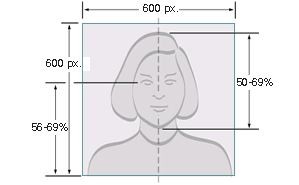Do I need a lawyer to apply for U.S. citizenship? No. You can file USCIS forms yourself, including Form N-400, Application for Naturalization, which can be submitted online. However, some people choose to seek assistance from a lawyer or Executive Office for Immigration Review (EOIR)-accredited representative. If you decide to get legal assistance, you can start here: Many people offer to help with immigration services. Unfortunately, not all of them are authorized or qualified to do so. If you are seeking legal help to complete your Application for Naturalization, please be aware that only attorneys and EOIR-accredited representatives can provide legal advice about which forms and documents to attach to your application, explain immigration options you may have, and communicate with USCIS about your case. For additional information, please review USCIS’ guidance on the unauthorized practice of immigration law. If you decide to submit Form N-400, Application for Naturalization, without legal assistance, obtain information about the naturalization application process and study materials to help you prepare for the naturalization test at the Citizenship Resource Center. Also visit, the N-400, Application for Naturalization page and read the instructions. Will I be asked all of the civics questions during the naturalization interview? For the 2008 version of the civics test, there are 100 available civics questions on the naturalization test (PDF, 368.79 KB), but you will not be asked to answer all of them during your naturalization interview. You will be asked up to 10 questions from the list of 100 questions. You must answer 6 questions correctly to to pass the 2008 version of the civics test. For the 2020 version of the civics test, there are 128 available civics questions on the naturalization test, but you will not be asked to answer all of them during your naturalization interview. You must answer at least 12 of the 20 questions correctly to pass the 2020 version of the civics test. Do I need to bring original documents such as birth and marriage certificates to the naturalization interview? Yes. You should bring certain original documents to your interview. In the instructions to Form N-400, Application for Naturalization, USCIS provides an extensive list of examples of original documents that you should bring to the interview, depending on different case scenarios. Examples of these documents include: original birth, marriage, divorce, final adoption and naturalization certificates; court orders/decrees; evidence of child support payments; court-certified arrest reports; and probation/parole records. Certain certified copies of documents can also be provided. You should also submit copies–preferably certified copies–of these documents at the initial filing of your application. These documents should be submitted as evidence in support of your application, and will facilitate the USCIS officers’ review of your request. When should I submit Form N-648, Medical Certification for Disability Exceptions? Applicants for naturalization seeking an exception to the English and/or civics requirements for naturalization because of a physical or developmental disability or mental impairment are encouraged to submit this form at the time they file Form N-400, Application for Naturalization, with USCIS. However, USCIS recognizes that certain circumstances may prevent concurrent filing of the naturalization application and the disability exception form. Accordingly, an applicant may file the disability exception form during any part of the naturalization process, including after the application is filed but before the first examination, during the first examination, during the re-examination if the applicant’s first examination was rescheduled, and during the rehearing on a denied naturalization application. How will I know what the decision is on the Form N-648, Medical Certification for Disability Exceptions, I submitted? The decision on your Form N-648 will be made at the time of your naturalization interview. If your Form N-648 is found to be sufficient, and the licensed medical professional who completed your Form N-648 indicated on the form that you were unable to comply with all of the educational requirements, the officer will conduct the eligibility interview in your language of choice with the use of an interpreter and will not test you on any of the educational requirements. If your Form N-648 is found to be sufficient, and the licensed medical professional indicated on the form that you were unable to comply with only some of the educational requirements, the officer will administer the tests for the other requirements. You will be permitted to use an interpreter if the medical professional indicated that you were unable to comply with the English speaking requirement. If your Form N-648 is found to be insufficient, the officer must proceed with the eligibility interview in English and administer all portions of the English and civics testing as if you had not submitted Form N-648. What should I do if I have already applied for naturalization and my Permanent Resident Card (Green Card) is expiring? While one’s lawful permanent resident status does not expire, barring naturalization or termination of status, a lawful permanent resident must have valid, unexpired proof of lawful permanent residence in their possession at all times. Applying for naturalization does not change this requirement. However, effective Dec. 12, 2022, a naturalization applicant who properly submits Form N-400 will receive a Form N-400 receipt notice that, when presented with their Green Card, automatically extends the validity of the Green Card for 24 months from the “Card Expires” date. This receipt notice must be presented to show that your Green Card, which is proof of your lawful permanent resident status, has been extended, such as for purposes of employment or travel authorization. If you have been issued a Form N-400 receipt notice that automatically extends the validity of your Green Card, but it has been lost or destroyed, then you generally must file Form I-90 to renew your expiring Green Card. For more information on renewing your Green Card, visit uscis.gov/green-card/after-we-grant-your-green-card/replace-your-green-card or uscis.gov/i-90. If I fail a portion of the naturalization test, when will I be retested? Unless you are eligible for an exception to the English or civics requirements, you will be given two opportunities to meet the English and civics requirements. If you fail any portion of these requirements, you will be retested during a new interview on the portion of the test that you … Read more



